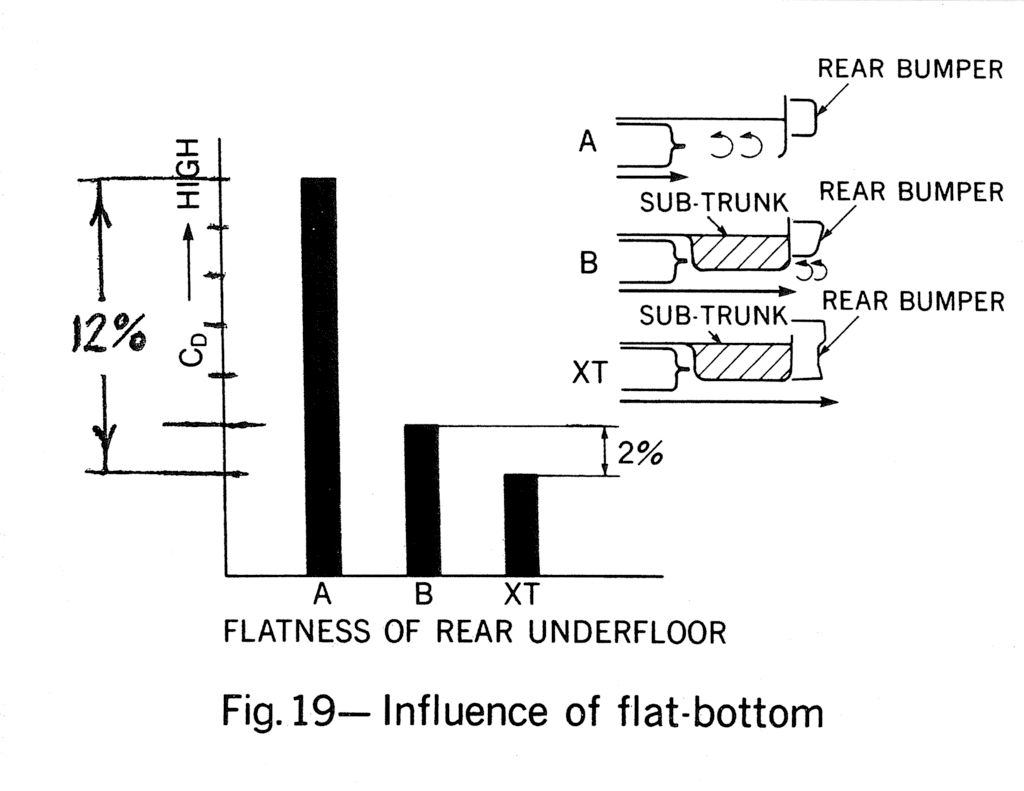I found what I was thinking of,from a 1986 SAE book on recent progress in fuel economy.
The paper is from Subaru's R&D of the Cd 0.29 Subaru XT.The particular citation is on page 20 of the book,with Fig. 19- Influence of flat-bottom.
The image shows three different under body configurations.
*The lowest drag is for that of a sub-trunk which fills the void between the gas tank and the rear bumper,with the bottom of the bumper even with floor of the trunk.
*The second lowest drag is for that of the same configuration,excepting that the bottom of the bumper has been raised above the elevation of the sub-trunk floor.This additional void is all turbulence,and adds 2% to the drag.
*The worst-case scenario is with an even higher bumper bottom,and removal of the sub-trunk,which adds 12% to the drag.
-------------------------------------------------------------------------
When air loses a surface to flow over,it immediately turns into the void,triggering turbulence.The sub-trunk prevents the deflection and helps shape the flow smoother.
With the XT,the concept is further promoted by including the bottom of the bumper as a means to shape the flow.
--------------------------------------------------------------------------
Dead air pools inside the perimeter of the bumper,with the active flow passing underneath,just as air flowing over a pool of water.
--------------------------------------------------------------------------
By cutting holes in the 'dam' your inviting flow separation,turbulence,and higher drag.
------------------------------------------------------------------------
It looks like you can't change the drag more than 2%,so the most your fuel economy could change is around 1% which I submit to you,cannot be measured outside of a wind tunnel.Your car,with zero modifications will have a seasonal mpg variability of 12% anyway.Any minute change,as with the holes,will be lost in the signal-to-noise ratio.
I have the graphic with me and hope to get it scanned before the store closes.
Here we go
